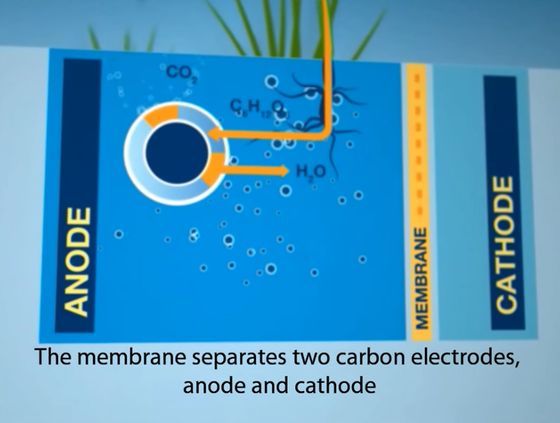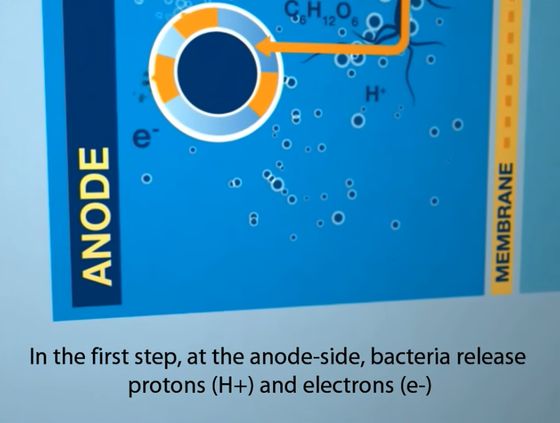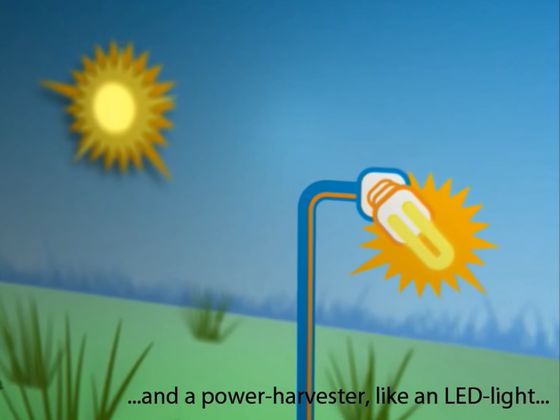What is the potential of 'microbial fuel cells' that use sewage and wastewater as fuel to generate electricity through the action of microorganisms?

As climate variability mitigation has become a global issue, countries are promoting the introduction of power generation using renewable energy such as solar power and wind power. In recent years, in addition to the widely known solar power generation and wind power generation, '
Four ways microbial fuel cells might revolutionise electricity production in the future
https://theconversation.com/four-ways-microbial-fuel-cells-might-revolutionise-electricity-production-in-the-future-152184
A fuel cell has an anode (minus pole) where electrons flow into an external circuit and a cathode (+ pole) where electrons flow from an external circuit, and consumes the fuel given between both electrodes to generate electricity. The characteristic of microbial fuel cells is that 'microorganisms that decompose organic matter and extract electrons' are responsible for the reaction of extracting electrons from fuel at the electrodes.
In a general microbial fuel cell, the anode chamber and the cathode chamber are separated by a membrane, and the microbial catalyst grows at the anode and decomposes organic substances in the fuel to convert them into electrons and hydrogen ions. The electrons generated by this reaction flow into the cathode chamber through an external circuit, and hydrogen ions also move through the membrane to the cathode chamber, so hydrogen ions react with the electrons in the cathode chamber to generate water. The mechanism is that organic matter in the fuel is continuously decomposed by microorganisms and electrons are sent to the cathode chamber through an external circuit to generate an electric current.
At the time of writing the article, microbial fuel cells that can operate small fans and LED lights have already been developed. In addition, microbial fuel cells have the advantages of 'strong resistance to salt,' 'operates at room temperature,' and 'can use various substances as fuel,' so there is a possibility that the power generation system will change significantly in the future. That thing.

Kyazze describes four cases where the application of microbial fuel cells looks promising.
◆ 1: Power generation using manure
Biodegradable organic substances contained in feces and urine are attracting attention as fuels for producing electricity by microbial fuel cells. In fact, in Ghana,
The experiment used a toilet equipped with a microbial fuel cell for approximately two years, producing enough power to power the LED lights in the toilet while removing nitrogen from urine and composting feces. That's right. In remote areas and refugee camps where the power grid is not well-developed, this mechanism, which can generate electricity using manure in the toilet as fuel, can be very useful, Kyazze said.
◆ 2: Power generation using plants
By applying microbial fuel cells, it is possible to generate electricity using living plants. The following movie explains how plants can be used to generate electricity.
Plant-e animation [EN] --YouTube
During the growth process, plants produce carbohydrates such as glucose, some of which flows out as exudates from the roots.

Therefore, it is possible to construct a microbial fuel cell by providing an anode chamber around the root and a cathode chamber in a place separated by a membrane.

Microorganisms take out electrons using root exudate as fuel ...

Can be used for lighting and charging devices through an external circuit.

Finally, the electrons flow into the cathode chamber.

Plant-based microbial fuel cells have the potential to revolutionize power generation in isolated communities that do not have access to the power grid. Kyazze argued that in the future, roadside trees could be used to illuminate the streets of the town.

◆ 3: Low power desalination system
A slightly unusual variation of microbial fuel cells is the 'desalting system' that uses microorganisms. In this system, an anion exchange membrane is installed on the anode chamber side of the microbial fuel cell and a cation exchange membrane is installed on the cathode chamber side, and the water to be desalted is put inside the two membranes.
When a microorganism reacts and hydrogen ions are generated on the anode chamber side, the hydrogen ions cannot move to the water to be desalted through the anion exchange membrane. Therefore, anions flow from the water to be desalted through the anion exchange membrane to the anode chamber side. On the other hand, when electrons move to the cathode chamber side through an external circuit, hydrogen ions are consumed in the reaction, so cations flow from the water to be desalted through the cation exchange membrane to the cathode chamber side.
By repeating this exchange, the water surrounded by the two membranes will be desalted. Kyazze says the way to achieve large-scale desalination while generating electricity is revolutionary, as existing systems that turn seawater into freshwater consume so much energy.
◆ 4: Improving the efficiency of the methane fermentation method
The methane fermentation method (anaerobic fermentation method) is a method of decomposing organic matter contained in wastewater into microorganisms and extracting biogas containing methane gas, which can be used as natural gas, as the main component. Generally, the methane fermentation method is inefficient, but according to Mr. Kyazze, the efficiency of the methane fermentation method can be improved by using a method called electromethanogenesis that combines the methane fermentation method and the system of microbial fuel cells.

At the time of writing the article, it seems that multiple startups are conducting research toward commercialization of microbial fuel cells, and in the future microbial fuel cells will be used for power generation in outer space and will be supplied with power in long-term space missions. There is a possibility, Kyazze said.
Related Posts:
in Science, Posted by log1h_ik







